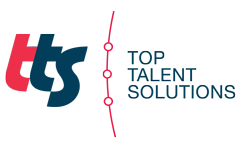In a recent study, TTS’s best-of-breed product partner, Aon Assessments, reviewed their client database and based on the experience of more than 48 million assessments throughout the globe across multiple industries, highlighted several key insights and recommendations.
In this article, we summarize these findings with the specific aim of showing how assessments can inform, shape and ultimately drive business strategy and success (for the full report, click here).
The current talent landscape
In today’s competitive business landscape, what truly sets companies apart from the competition is the collective power of their people. The individuals hired, the skills they possess, the products they create, the services they sell, and the support they provide are the building blocks of organizational success.
However, hiring and retaining the right talent with the right skills has become increasingly challenging in recent years. While some industries struggle with a scarcity of critical skills, others are still making sense of the evolving landscape of future job requirements.
In such a fast-paced environment, organizations have to rethink their workforce strategies and approach to talent identification and development.
Aon’s research suggests that modern workforce planning must accommodate three key factors:
- Resilience: ensures the ability to navigate change and uncertainty.
- Organizational agility: enables flexibility and adaptability of employees to changing demands and,
- Belonging: creates a diverse and inclusive culture.
These pillars are underpinned by the constant need for data-informed talent decisions. Talent assessments play a crucial role in providing valuable insights into workforce capabilities, identifying competence gaps, and unlocking potential.
By leveraging objective and fair talent assessments, organizations can minimize recruiter bias, build a more diverse workforce, and empower individuals to take ownership of their development and career decisions.
Using data provided by more than 15 million assessments performed annually, the Aon research team identified several core challenges that are faced by talent professionals.
Challenge 1: How to enable talent strategy to support business strategy
To navigate the changing organizational landscape, talent strategies must be informed by accurate talent data. It is therefore essential to consider the external environment, current workforce demographics, skills profiles, and the direction of organizational strategy.
Talent assessments provide quantifiable measures at the individual, business unit, and organizational levels. By leveraging this data, talent professionals can make informed decisions that align with your business strategy.
Challenge 2: Building better candidate experiences and enhancing diversity and inclusion
As organizations strive to deliver their diversity, equity, inclusion, and belonging strategies, talent assessments offer fair and objective measurements.
These assessments can be tailored to create a more inclusive participant experience, ensuring a diverse workforce and nurturing a sense of belonging.
Challenge 3: Building a resilient organization with future workforce skills
Workforce resilience is essential for sustainable success. It involves supporting individual resilience and developing new skills to thrive in an ever-changing environment.
Talent assessments play a vital role in identifying potential for agility, resilience, curiosity, and an inclusive mindset.
Objective measures quantify these competencies, enabling comparisons between participants, identifying top talent, and focusing on development needs.
In addition to the three key challenges faced by talent professionals in the modern talent landscape, Aon researchers also identified three key trends that are likely to shape how talent professionals will need to address these challenges more effectively.
Important trends in addressing talent challenges.
Using more talent assessments to enable strategy
The Aon study found that there has been a steady increase in assessment volume over the last four years, totaling a remarkable 85% growth in assessments! In the same vein, the use of AI-mediated interview measures has doubled over the last three years and is continuing to climb.
This points to the fact that employers are highly motivated to know more about employees and potential employees’ capabilities and effectiveness. In turn, such data gained will inform talent strategies to a greater extent than before.
Focus on improved user experience (UX)
The study shows that there has been an 11% increase in the use of net promoter scores based on participant experience of recruitment and assessment processes. This indicates that there is a growing realization among participants and prospective hires that their voice matters.
This assertion is backed up by the data: the number of participants who are willing to give feedback on their assessment experiences has doubled.
Talent professionals are also increasing their use of assessment feedback, with more than a 60% growth in feedback provided after assessments, suggesting that professional feedback is becoming the standard practice across assessment categories.
Resilience and interpersonal competencies are critical
Aon’s research reveals that senior leadership tends to have higher levels of resilience than junior levels. In addition, the development of interpersonal and business-related competencies is more prized now than ever before.
Chief amongst these are: communicating with impact, creating emotional attachment, driving results, and taking initiative.
Unlocking Opportunities with Talent Assessment
Given the above challenges and core trends within the talent assessment landscape, professionals in the field face both uncertainty and opportunity. While challenges can sometimes seem daunting, it is important to take note of opportunities that have emerged as a consequence of increased assessment volumes and the adoption of new technologies.
Aon’s report highlights several such opportunities, discussed below:
Opportunity #1: Assess talent to support retention
While assessments have traditionally been used in pre-hire stages, there is untapped potential in utilizing assessments among existing employees as well.
Post-hire assessments can provide valuable insights into the competencies of the existing workforce. By leveraging assessments for career conversations between managers and workers, organizations can strengthen retention and empower individuals to manage their own career paths.
Opportunity #2: Understand and build diversity in the talent pool
Analyzing data from talent assessments reveals shifts in candidate demographics. Understanding these differences across regions and sectors can help organizations target broader diversity in their talent pools.
By identifying age and gender gaps, organizations can implement targeted strategies to attract and retain diverse talent.
Opportunity #3: Save internal resources through AI-assisted assessments
Artificial intelligence (AI) offers an additional means to assess participants.
AI-supported tools, such as video interviewing, provide objective evaluation while also reducing bias. Such technologies save HR and talent management resources while also creating a more distinctive, objective, and transparent interview process.
Additionally, remote proctoring technology ensures the integrity of assessments completed offsite, offering added confidence in assessment scores and demonstrating a commitment to objectivity and fairness to candidates and hiring managers alike.
Using talent assessment to achieve business strategy
By addressing the talent challenges and unlocking the opportunities presented by increased assessment use and new technologies, talent professionals can make a very real contribution to the achievement of organizational strategy.
By aligning assessment processes and products to what the organization wants to achieve with its talent pool, diversity, and inclusion mandate, as well as the development of existing staff members, talent professionals can become important strategic levers for senior leadership.
Additional factors worth considering in terms of how using talent assessments can further business objectives include:
- Better business results are achieved by placing the right people in the right jobs where they have the highest likelihood of success.
- Assessments offer insight into the readiness of employees to move to the next level and therefore help in keeping businesses future-proof and relevant.
- Assessments are the cornerstone data source for workforce planning and talent audits.
- Assessment data can be used to analyze diversity statistics and uncover potential reasons why certain groups may be underrepresented at various tiers within the organization.
Assessments can inform other talent initiatives such as engagement programs, employee benefits, and retention strategies.
Final thoughts
At the core of Aon’s research findings is a central insight: People are the driving force behind organizational success.
By leveraging talent assessments, professionals in this field can unlock the full potential of an organization’s workforce, as well as enable data-informed talent decisions.
Such decisions and the processes they inform, support business strategies, drive diversity and inclusion, build resilience, and provide valuable insights for retention and career development.
Embracing the power of talent assessment can set an organization apart in a competitive market, ensuring a thriving and future-ready workforce.
We look forward to more critical insights from our product partner, Aon Assessments, so look out for future articles on this and other studies based on global data.
If you would like to know more about the Aon solutions that TTS provides its clients, drop us a line at info@tts-talent.com


